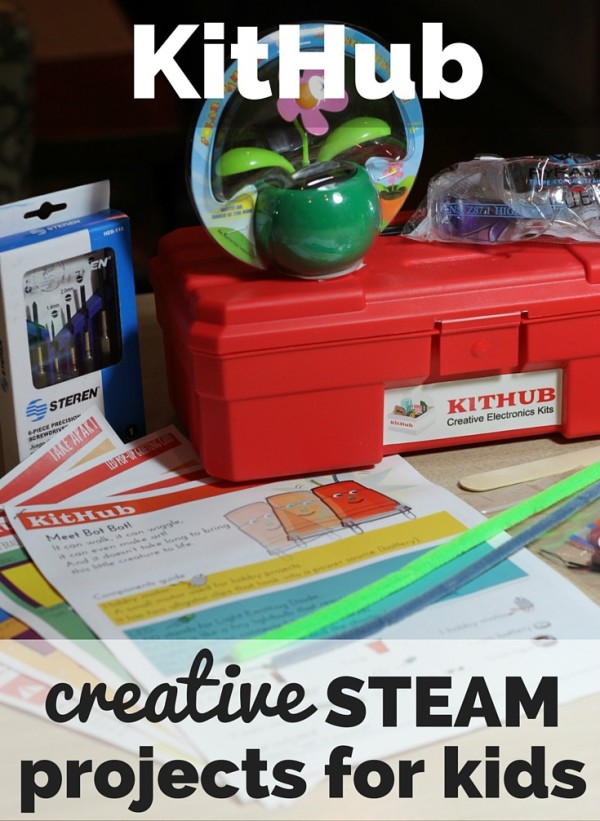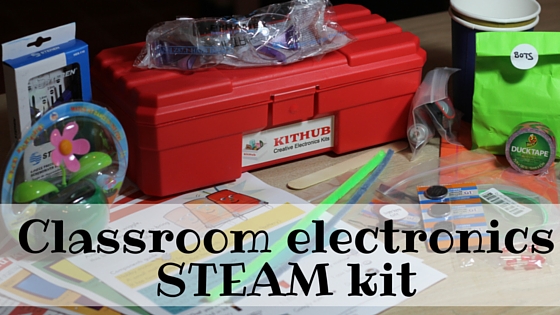I recently shared How to Get Started with Makerspaces in the Classroom, and how they’re great for inspiring creativity in children and providing them an opportunity to explore STEAM (science, technology, engineering, art, and math). If you love the idea of having Makerspace in your classroom or making it easier for students to start making at home, KitHub might be the jump start you need.

The STEAM-based projects from KitHub are designed for grades K-8. I love that each of the projects have been tested in real classrooms, after-school programs, and even in-home programs and have shown fantastic results. Although not marketed specifically toward any gender, I did notice that KitHub has taken great care to create projects that will pique many girls’ interest in STEM and STEM, and the wide variety of materials/projects offered ensure that nearly every child will find something they’d like to create.
The kits can accommodate up to 100 kids, so they can be used for multiple class periods, in a shared school Makerspace, or simply be re-used from year to year even with large class sizes.
The best part? There are step-by-step directions for kids who want a little more guidance, but the kits ultimately support students in designing and creating their OWN experiments or projects.
You can check out the lesson plans, videos, and see directions for various projects for free on the KitHub site. You’ll see that their lesson plans are incredibly detailed and explain everything you need to know about the projects.
After you’ve taken a look around the site, you can sign up for KitHub’s Educator Program which qualifies you for 15% off all kits! You then get to choose which project kits you’d like KitHub to send.
I received KitHub’s Beginner Electronics Kit, which contains everything you need for a wide range of STEAM-based electronics projects. The kit comes with easy-to-follow, colorful instructions that many children could follow on their own; a lesson plan that’s adaptable for grades K-8; and all the supplies needed to carry out the projects, from magnets to batteries.

One of the activities included in my kit is the Take Apart Electronics project, in which kids will–you’ve guessed it–take apart an electronics piece (in this case, a solar-powered flower) to study its components and find out how to put them back together or use them individually.
Here’s what the Take Apart Electronics activity looks like in action (in a home setting):
KitHub not only provide materials for the projects, but they offer great support and ongoing guidance as well. They’ve set up a KitHub group on Slack which you can join to interact with other teachers in the program and have your questions answered by KitHub experts. KitHub also provides a 30-minute consultation to teachers who order 30 or more of their kits.
Ready to get started? Make sure you sign up for the Educator Program so you can save 15% off all kits. Happy Making!
Disclosure: KitHub sent me a complementary set of kit materials and compensated me for the time I spent reviewing their resources and helping to spread the word about them. As always, I only review products on the blog that I truly believe are helpful for teachers and that I would use in my own classroom.

Angela Watson
Founder and Writer
Sign up to get new Truth for Teachers articles in your inbox
OR

Join our
community
of educators
If you are a teacher who is interested in contributing to the Truth for Teachers website, please click here for more information.















